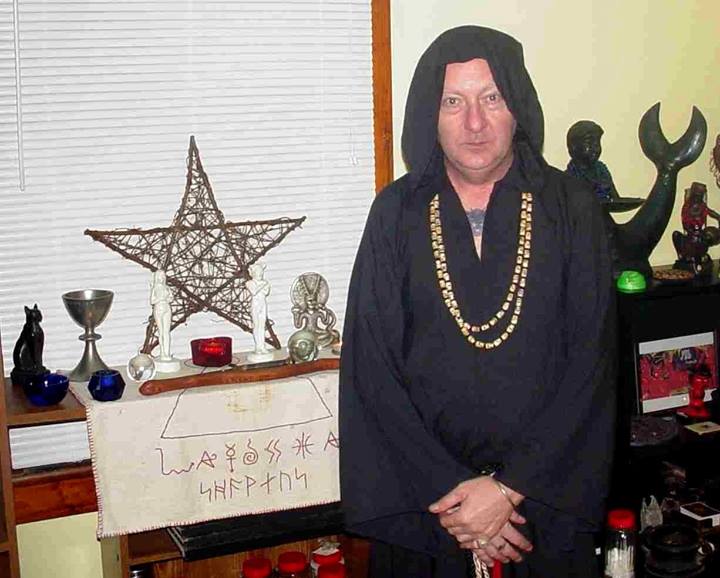Difference between revisions of "Template:POTD protected"
Occultwiki (talk | contribs) |
Occultwiki (talk | contribs) |
||
| Line 1: | Line 1: | ||
{| role="presentation" style="margin:0 3px 3px; width:100%; text-align:left; background-color:transparent; border-collapse: collapse; " | {| role="presentation" style="margin:0 3px 3px; width:100%; text-align:left; background-color:transparent; border-collapse: collapse; " | ||
|style="padding:0 0.9em 0 0;" | [[File: | |style="padding:0 0.9em 0 0;" | [[File:Warlock-Witch.jpg|300px|thumb|]] | ||
|style="padding:0 6px 0 0"| | |style="padding:0 6px 0 0"| | ||
A '''[[warlock]]''' is a male practitioner of [[witchcraft]]. In early modern Scots, the word came to be used as the male equivalent of [[witch]] (which can be male or female, but has historically been used predominantly for females). The term may have become associated in Scotland with male witches due to the idea that they had made pacts with ''Auld Hornie'' (the devil) and thus had betrayed the [[Christianity|Christian]] faith and broke their baptismal vows or oaths. From this use, the word passed into Romantic literature and ultimately 20th-century popular culture. | |||
Although most victims of the [[witch-hunt|witch trials]] in early modern Scotland were women, some men were executed as warlocks. In his day, John Napier was often perceived as a warlock or [[magician]] for his interest in divination and the [[occult]], though his established position likely kept him from being prosecuted. | |||
<p><small> | <p><small>Photo Credit: Private Collection of G. Hoke</small></p> | ||
[[:Category:Images|'''(More Images)''']] | [[:Category:Images|'''(More Images)''']] | ||
<div class="potd-recent" style="text-align:right;"> | <div class="potd-recent" style="text-align:right;"> | ||
Revision as of 16:22, 26 June 2023
|
A warlock is a male practitioner of witchcraft. In early modern Scots, the word came to be used as the male equivalent of witch (which can be male or female, but has historically been used predominantly for females). The term may have become associated in Scotland with male witches due to the idea that they had made pacts with Auld Hornie (the devil) and thus had betrayed the Christian faith and broke their baptismal vows or oaths. From this use, the word passed into Romantic literature and ultimately 20th-century popular culture. Although most victims of the witch trials in early modern Scotland were women, some men were executed as warlocks. In his day, John Napier was often perceived as a warlock or magician for his interest in divination and the occult, though his established position likely kept him from being prosecuted. Photo Credit: Private Collection of G. Hoke |
